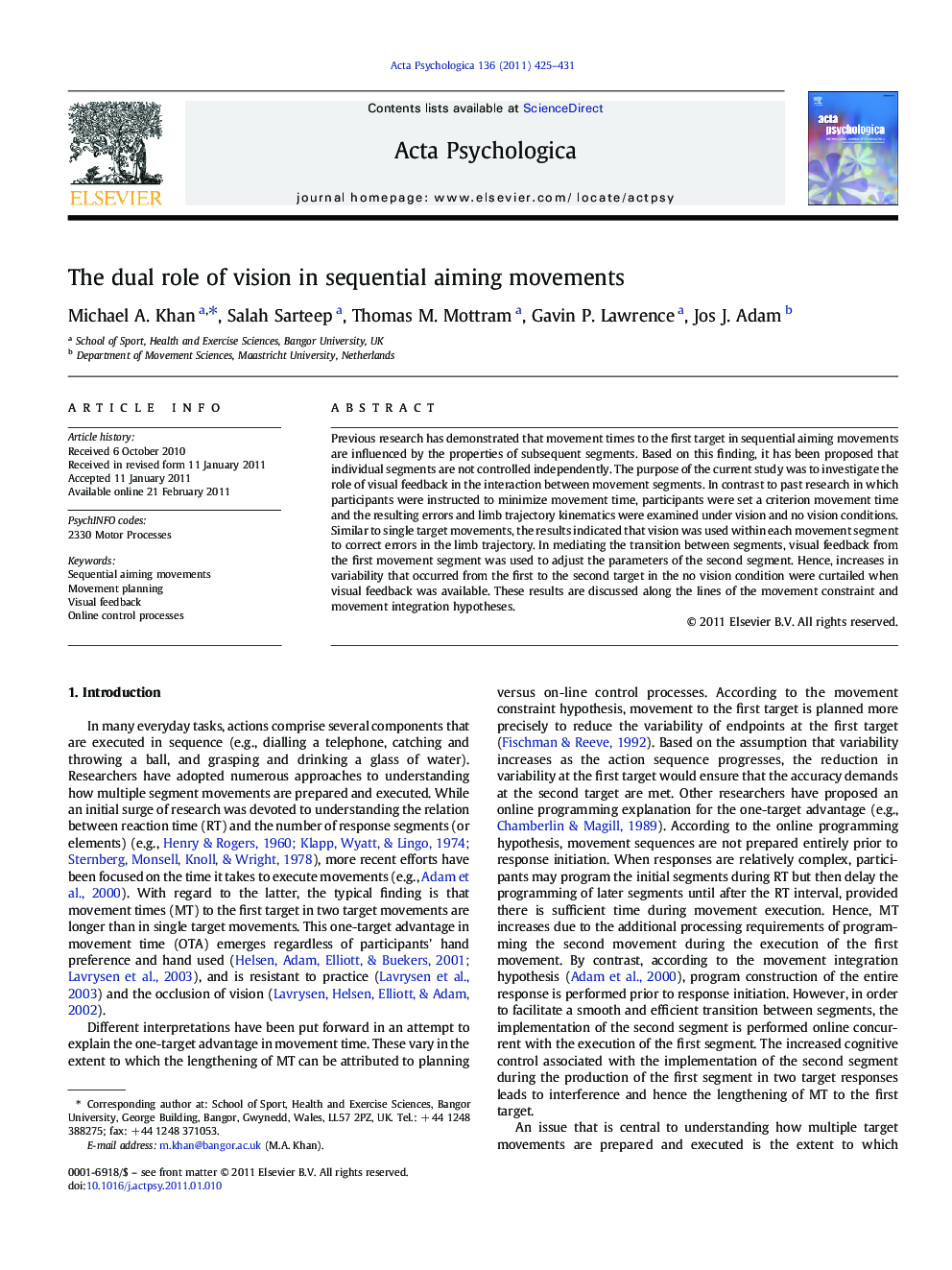| Article ID | Journal | Published Year | Pages | File Type |
|---|---|---|---|---|
| 920145 | Acta Psychologica | 2011 | 7 Pages |
Previous research has demonstrated that movement times to the first target in sequential aiming movements are influenced by the properties of subsequent segments. Based on this finding, it has been proposed that individual segments are not controlled independently. The purpose of the current study was to investigate the role of visual feedback in the interaction between movement segments. In contrast to past research in which participants were instructed to minimize movement time, participants were set a criterion movement time and the resulting errors and limb trajectory kinematics were examined under vision and no vision conditions. Similar to single target movements, the results indicated that vision was used within each movement segment to correct errors in the limb trajectory. In mediating the transition between segments, visual feedback from the first movement segment was used to adjust the parameters of the second segment. Hence, increases in variability that occurred from the first to the second target in the no vision condition were curtailed when visual feedback was available. These results are discussed along the lines of the movement constraint and movement integration hypotheses.
Research highlights► Variability at the first target was greater for two than single segment movements. ► Variability increased from the first to second segment when vision was occluded. ► First segment distance was negatively correlated with second segment distance. ► Results support both movement constraint and movement integration hypotheses.
